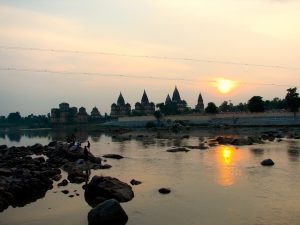For the first time in his life, 65-year-old Sheik Mohammad Jhallu is worried about feeding his family. Failed or poor harvests in the past few years have seen the grain stored at his home in central India’s Bundelkhand region dwindle rapidly. Water has dried in the nearby wells, forcing women of the 18-member household people to haul it from over a kilometre away.
Unceasing droughts, failed harvests, inefficient food distribution and job guarantee schemes have raised the spectre of hunger and thirst in Bundelkhand.
Encouraged by a few deceptive showers in early winter, Sheik Jhallu had ploughed some of his 40 acres of land but left off sowing as the moisture in the land soon evaporated. He did plant some pigeon pea (arhar). The crop died standing in the fields, burned by the extreme dryness of the unremitting drought that has been afflicting Bundelkhand for the past few years.
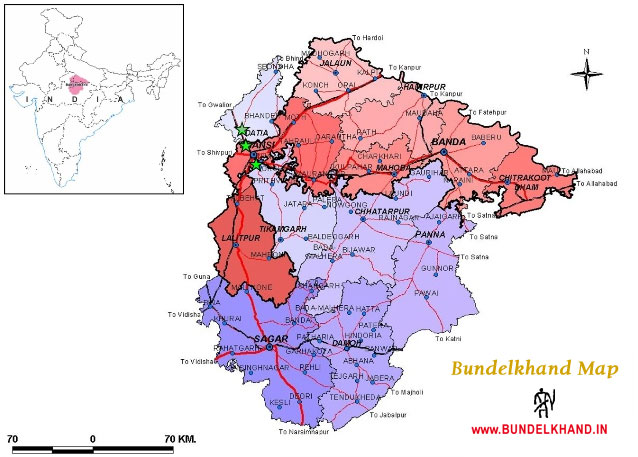
Unusually for a land irrigated mostly by rain, the main crop in Bundelkhand is planted in winter. Although rice is being increasingly cultivated during the kharif (summer and monsoon) season that is harvested in autumn for the last few decades, a farmer in Bundelkhand chiefly looks at the rabi (winter) crop for his household needs and for profit. The harvest has been meagre at best this year and many farmers have been unable to recover their seed. This follows last year’s disaster when untimely showers in February and March ruined the crop.
Even as the creaky government machinery gathers data on yields this season, farmers in village after village said in April that only a third of the arable land was sown and the crop has been sickly thin. “How do you cultivate land without water?” asks Sheik Jhallu, whose Gushiari village in Hamirpur district of Uttar Pradesh presents a dismal picture—barren fields, dry wells and a village pond so shrunken that there isn’t enough water for the animals.
![A dry village well in Banda district of Uttar Pradesh [image by Soumya Sarkar]](/wp-content/uploads/2016/05/1.2-A-dry-village-well-in-Banda-district-of-Uttar-Pradesh.jpg)
Forsaken land
Spread across 13 districts in the states of Uttar Pradesh and Madhya Pradesh, Bundelkhand has a long history of droughts. What has changed dramatically in recent times is their frequency and intensity. From once in five years in the second half of the 20th century, it has been practically one continuous drought since the turn of the millennium with just a few good years scattered in between.
Bundelkhand has seen subnormal rainfall for seven straight years now, with the shortfall exceeding 50% in many areas, reveals official data. In a water-starved region where 80% of the population lives in villages, there’s virtually no industry and agriculture is the mainstay of the people, this has had calamitous consequences. Even when the overall rainfall has been good, the shortening of rainy days and varying intensity of showers during the monsoon, which many scientists partly attribute to climate change, have often driven smallholder and marginal farmers to despair.
“Feeding my family is a daily fight that I frequently lose,” says Gore Lal of Paldev ka Purwa village in Banda district of Uttar Pradesh. “The land gives us nothing. Our only hope is the little money my sons send home.”
The predicament of Gore Lal, a Dalit farmer traditionally shunned as untouchable by Hindu society, is illustrative of the plight of the smallholder. Last year, he had sown wheat, chickpea and mustard on the six acres of land he owns with his four brothers. The family’s investment of INR 22,000 (USD 330), borrowed from the local moneylender at exorbitant rates, was almost entirely lost. The wheat harvest returned some INR 5,000 (USD 75), but he was unable to recover the seed from the chickpea crop.
This year, Gore Lal did not even try. “It’s no use. The well has been dry for the last two-three years. Earlier, you had to dig only 30-35 feet to get water. It has now gone down to 150 feet,” he says. “Who has the money for a bore well?”
![A lift irrigation canal that has run dry because there isn't enough water in the nearby river [image by Soumya Sarkar]](/wp-content/uploads/2016/05/1.3-A-lift-irrigation-canal-that-has-run-dry-because-there-isnt-enough-water-in-the-nearby-river.jpg)
With most farmers in the neighbourhood sitting on unsown land, falling back on daily wage labour isn’t easy either. The government’s much-touted job guarantee scheme through which any poor rural household can demand at least 100 days of work at minimum wages has seen patchy implementation. “We received just 35 days of work through NREGA (National Rural Employment Guarantee Act) last year,” says Gore Lal. It is ironic that the authorities have increased the days to 150 a year as an emergency response to the current drought.
India’s public distribution system (PDS), through which the government sells food to the poor at vastly subsidised rates, has been of no help. In the confusion over digitising records, Gore Lal’s household has been struck off the rolls and has been unable to draw food rations. A corrupt and inefficient system often sees to it that many of the poorest are excluded from the food dole even as the relatively better-off queue up at the shops. The helpless family now looks to the money sent home by Gore Lal’s young sons working at construction sites in New Delhi and Surat in the western state of Gujarat.
The story is endlessly repeated in households across villages such as Paldev ka Purwa and Galha a few kilometres away. Young and able-bodied men have been forced to migrate to urban areas looking for work. Living in stifling shanties and yoked to unskilled labour for poor pay, they are the breadwinners for their families. In the villages, only the elderly and children remain in a landscape that has become a farmer’s nightmare.
Climate change and water
The strong El Niño weather phenomenon in the Pacific Ocean in the past two years has led to scanty rainfall during India’s June to September southwest monsoon season. “The number one risk we face is global climate change because we are still very dependent on the monsoon,” junior finance minister Jayant Sinha said in November 2015. “The age-old patterns are changing, which is affecting our farming and creating a lot of agricultural distress.”
Last year, 39% of the country received deficient rain. As many as 11 states have declared drought, triggering a tardy emergency response. About 330 million people have been affected by the drought that has resulted from two weak monsoons, the federal government said. It has been particularly severe in Bundelkhand, Telangana and Marathwada, where the predominantly rural population depend almost totally on rain-fed agriculture.
The truant rains have meant a catastrophic turn towards groundwater to irrigate fields. Unsustainable rapid extraction and inadequate recharge have seen levels drop off a cliff in the unending drought. In many places of Banda, Mehoba and Hamirpur districts in Uttar Pradesh and Tikamgarh and Datia districts in Madhya Pradesh, groundwater levels have dropped below 150 feet, effectively cutting off most smallholder farmers from cultivation as the cost of extraction exceeds their means.
To make matters worse, the onset of summer has been fierce this year. Temperatures in Bundelkhand have already topped 45 degrees Celsius, and the mercury is steadily climbing. The region now faces a drinking water problem. Piped water has become erratic in most urban areas. In Banda town on the banks of the Ken river, water supply is disrupted for days in many localities. And this before the hottest months of May and June have arrived.
The situation is grimmer in many water-scarce villages. Trudging long distances for water have started taking a serious toll on the women, who are overworked at the best of times. The large number of livestock in the region is still holding up, but an increasing death toll among even the doughty cattle is a strong possibility.
In Bundelkhand and elsewhere, the only hope is now a normal monsoon. The Meterological department has forecast plentiful rainfall. Even so, it will be a long haul for Bundelkhand with at least two more daunting months of summer ahead.
Tomorrow: Bringing water back to Bundelkhand
![<p>A pigeon pea (arhar) crop that died in the fields before it could be harvested [image by Soumya Sarkar]</p>](https://dialogue.earth/content/uploads/2016/05/1.1-A-pigeon-pea-arhar-crop-that-died-in-the-fields-before-it-could-be-harvested.jpg)

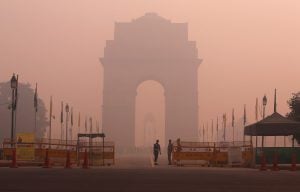

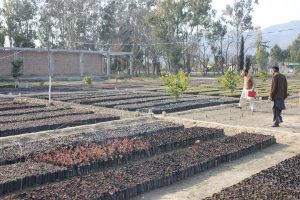
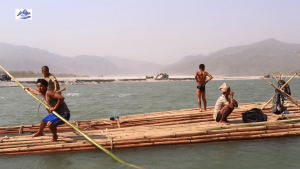
![Black-necked cranes on the Naymjang Chu riverbed near Zemithang village of Pangchen valley in Tawang district. [image by Lham Tsering]](https://dialogue.earth/content/uploads/2016/05/2.-Black-necked-cranes-on-the-Naymjang-Chu-riverbed-near-Zemithang-village-of-Pangchen-valley-in-Tawang-district.-Photo-by-Lham-Tsering-300x190.jpg)

